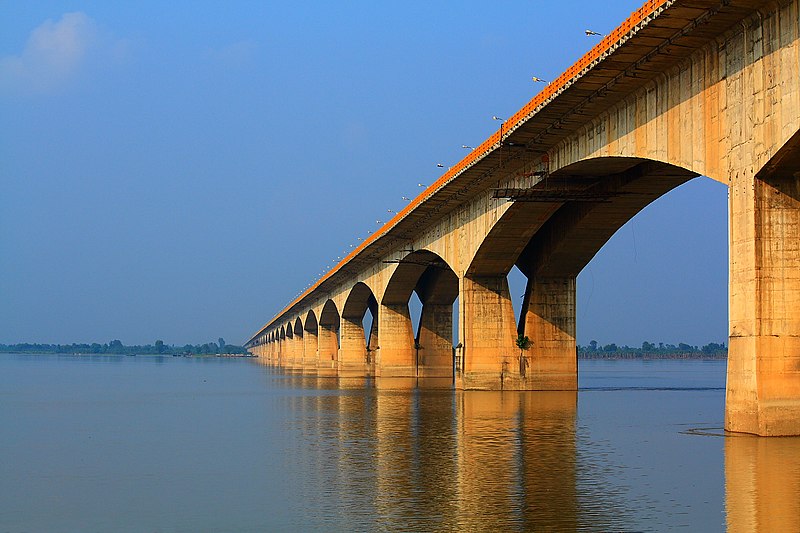 Sri Nagadeepa Chaithya, Jaffna
Sri Nagadeepa Chaithya, JaffnaDuring the period of reign by the Naga Tribe, Maninaga Island known also as Samudra Naga Bhavana or Naga Deepa was a place suitable for the dwelling of a tribe of people. This Island presently known as Nainativu is situated 25 miles off the coast of Jaffna.
Nearly 2600 years ago, this island was under a Naga King named Mahodara. A tussle between him and his nephew over gem studded chair grew into a furious war between them and their followers. Lord Buddha, who saw that this tussle would lead to a large scale war visited Nagadeepa and delivered ‘Dhamma’ on the kings and their followers.
After bearing the Dhamma, they presented Lord Buddha with the gem studded chair, who in turn gave it back to the kings. A stupa named ‘Rajayatane’ was built preserving the chair which they fought for. With the passage of time, this stupa was in ruins and later Sinhalese Kings Devanapetis, Mallakanaga Voharatissa, Agboo the Second, Dutugemunu, Bhathikabaya and Perakumba the great were instrumental in restoring this stupa.
Muthiyangana Chaithya, BadullaThe word Muthiyangana has several meanings such as: Mutti - Padang - Anganang - Muthiyanganag, which in Pali, literally means Midam Sankyaatha Nirwana or if a person who associates an open place and attains Nirwana, that open place is known as Muthiyangana.
As the Sacred Muttaka Dhatu—the Sacred Sweat of the Lord Buddha – is preserved inside the stupa, it is also known as Muthiyangana.
This stupa built on a landscape which rises like a pearl (sin: muthu) this land is called muthu - angana or Muthiyangana.
It is stated in the chronicle that along with Lord Buddha, 500 Bhikkus visited Muthiyangana and rested there. In this place, where the Sacred one has visited and rested a stupa was built by King Devana-- Petis.
Kirivehera, KataragamaOne of the places visited by Lord Buddha during his 3rd Journey to Sri Lanka was Kataragama. A person named Mahagosha was governing Kataragama during this time and Lord Buddha and his disciples happened to rest in his garden known as ‘Kihiri Uyana’. A stupa known as ‘Magul Maha Seya’ was built in the 3rd Century B.C by King Mahanaga. Brahmi writings on stone relics found in and around this stupa confirm the period of its construction.
With a height of 97 feet and a circumference of 277 feet and built on three circular platforms, Kirivehara or this stupa is supposed to be the only stupa of this kind in the world.
Sri Dalada Maligawa, KandyThe temple of the Tooth Relic in Kandy is the location of the Sacred Tooth (left Canine) of the Buddha, which was brought to Sri Lanka during the reign of King Kirtisri Meghavanna (301-328) by Prince Danta and Princess Hemamala from the kingdom of Kalinga, India. It became the palladium of the Sri Lankan kings and was preciously guarded in a special shrine within the precincts of the Royal Palace, wherever the Capital was located.
Wimaladharmasuriya 1(1590-1604) was the first king who brought the tooth relic to Kandy and located it in a three storey shrine. The present two storied shrine is said to have been built by King Narendrasinha (1707-1739).
The upper storey which houses the Tooth Relic constitutes the Vadahitina Maligawa Proper, which possesses the inner chamber (Gandha-Kuti) preceded by a narrow passage called Handun-Kudama, where devotees make offerings.
Inside the Shrine Chamber is the golden casket containing the Sacred Tooth Relic of the Buddha, which is enshrined in six other Caskets of precious material and placed within a bullet proof glass chamber.
Information Obtained from stampopedia.com
 Many thanks to my FB friend Gabriel Alejandro Etinzon
Many thanks to my FB friend Gabriel Alejandro Etinzon

















































